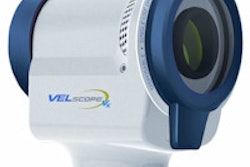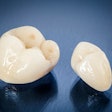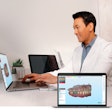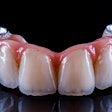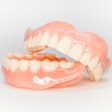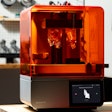Thyroid collars can help protect patients from radiation when undergoing direct digital panoramic imaging, but do not offer extra protection for the thyroid or the rest of the body during indirect digital panoramic imaging, according to a study in Dentomaxillofacial Radiology (August 30, 2013).
Researchers from Peking University School and Hospital of Stomatology and China-Japan Friendship Hospital used four panoramic systems to evaluate the shielding effect of thyroid collars during digital panoramic radiography: the Orthopantomograph OP200 (Instrumentarium Dental), Orthophos CD (Sirona Dental Systems), Orthophos XG Plus (Sirona), and ProMax (Planmeca).
Using one collar (at the front of the neck) and two collars (one at the front, one at the back), the study authors measured tissue-absorbed doses using thermoluminescent dosemeter chips in an anthropomorphic phantom, and effective organ and total effective doses were derived according to International Commission of Radiological Protection 2007 recommendations.
When no thyroid collar was used, the effective dose to the thyroid gland was 1.12 microsieverts (µSv) for the OP200, 2.71 µSv for the Orthophos CD, 2.18 µSv for the Orthophos XG plus, and 2.20 µSv for the ProMax, the researchers reported. When one collar was used in front of the neck, the effective organ doses of the thyroid gland were 1.01 µSv (9.8% reduction), 2.45 µSv (9.6% reduction), 1.76 µSv (19.3% reduction), and 1.70 µSv (22.7% reduction) for the four systems, respectively.
When two collars were used, the effective organ doses of the thyroid gland were significantly reduced for the Orthophos XG Plus and ProMax. The same trend was observed in the total effective doses for the four machines.
"Wearing a thyroid collar was helpful when the direct digital panoramic imaging systems were in use, whereas for the indirect digital panoramic imaging systems, the thyroid collar did not have an extra protective effect on the thyroid gland and whole body," the researchers concluded.






